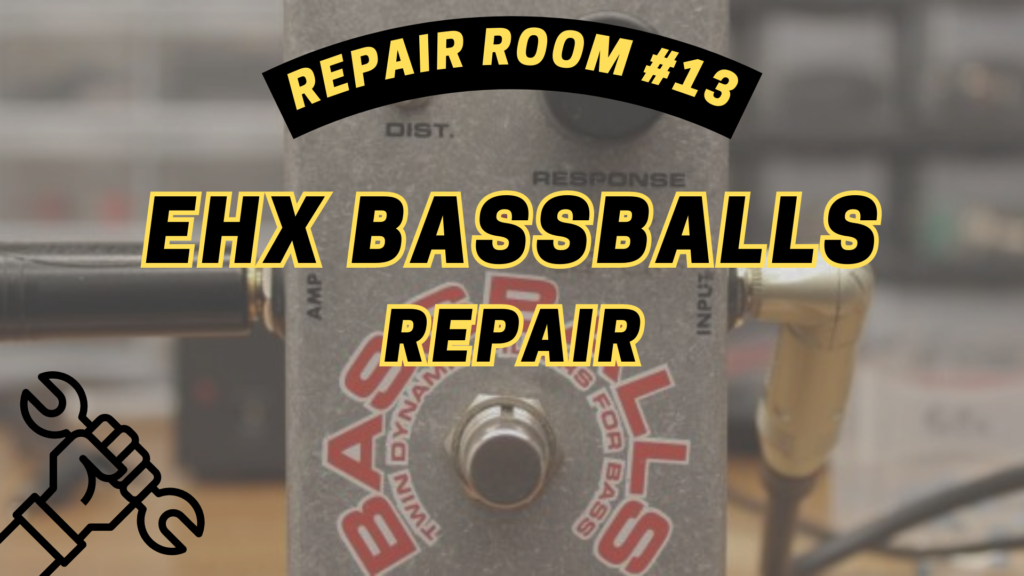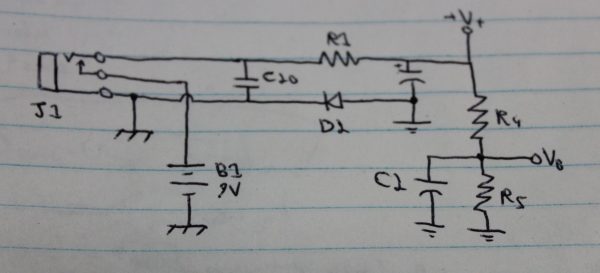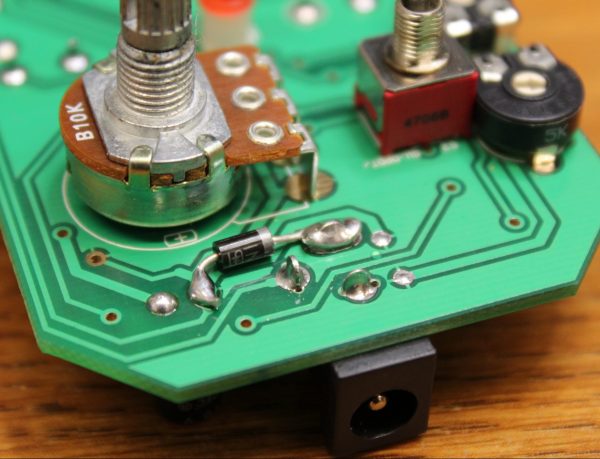
There’s the birds, there’s the bees, and there’s reverse polarity protection. Always protect your circuits.
The Electro-Harmonix Bassballs is a twin-dynamic envelope filter. This particular unit ended up on my bench as a result of plugging in the wrong polarity power supply. In this post, I go over the repair process and how I got this Bassballs up and running again.
As a member of the Reverb Partner Program and as an Amazon Associate, StompboxElectronics earns from, and is supported by, qualifying purchases.
Disclaimer: Stompbox Electronics and/or the author of this article is/are not responsible for any mishaps that occur as a result of applying this content.
EHX Bassballs Repair
Going into this we have the following description: “I have an Electro-Harmonix Bassballs Nano that has stopped working with no physical damage.” With that summary, my immediate attention geared toward the power circuit.
Testing the EHX Bassballs Power Circuit
Usually I check the 9V line, followed by any biasing voltages. In this case, 9V was present, but when probing for the 4.5V reference I read another 9V!
After reading 9V at what was supposed to be 4.5V I started probing everything connected to that reference voltage line (formed by the voltage divider R4 and R5), including the two op amps U1 and U2, capacitor C2, and resistor R9. Doing this revealed 9V at every pin of the op amp.
When op amp pins are riding the supply voltage that’s usually a sign that the op amps have gone bad. So, immediately I desoldered the op amps from the board, thinking they may have been burnt out. On retesting the circuit I still found 9V showing up in places it shouldn’t.
I continued to desolder C2, R4 and R5, which are the key components for the reference voltage line. This time, as expected, there was no voltage on the reference line, as there was nothing to power it. I decided to test the ground pin where one of the op amps were seated. I found 9V showing up on the board’s ground plane!

Narrowing It Down
The possibility of a short was beginning to sound wrong, since 9V was also showing up at the op amp’s ground pin. Sure it’s odd, but it doesn’t signify a short. If anything, that signifies an OPEN circuit.
I took a step back; I was measuring with reference to the power jack J1’s ground pin. Looking at the board a bit closer, that was actually a separate ground from the rest of the circuit: the chassis ground.

Note how there are two grounds sketched out in the schematic above: the chassis ground and the system ground.
The system ground is connected to the chassis ground via the diode D2. If, for any reason, the branch containing D2 had opened there would be no return path for the power circuit’s current flow.
So, 9V was present on the circuit board, but with no current flow that voltage just sat there unused.
Replacing the Polarity Protection Diode (D2)
It’s worth noting that the diode D2 is used for the sole purpose of reverse polarity protection, making D2 a likely culprit.

I removed D2 and replaced it with a through-hole 1N4001 using C1’s (-) lead and J1’s center pin lug. After reinstalling the other surface-mount components I had a fully functioning Bassballs!
Here’s a great write-up on the different styles of circuit grounding in analog circuits for a better understanding of today’s repair. Mind your grounds!
Meet the Author:

Hi, I’m Dominic. By day, I’m an engineer. By night, I repair and modify guitar effects! Since 2017, I’ve been independently modifying and repairing guitar effects and audio equipment under Mimmotronics Effects in Western New York. After coming out with a series of guitar effects development boards, I decided the next step is to support that community through content on what I’ve learned through the years. Writing about electronics gives me great joy, particularly because I love seeing what others do with the knowledge they gain about guitar effects and audio circuits. Feel free to reach out using the contact form!
The Tools I Use
As a member of Amazon Associates, Stompbox Electronics earns and is supported by qualifying purchases.













